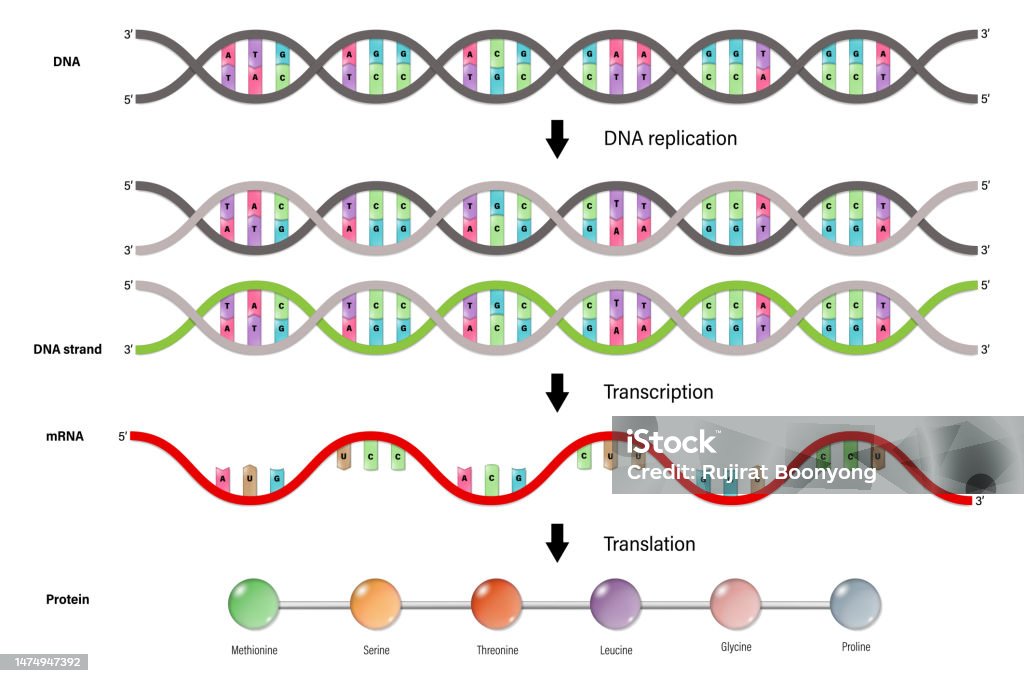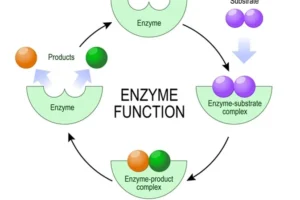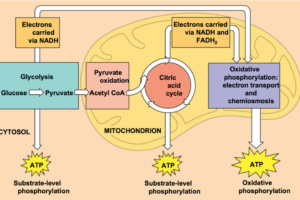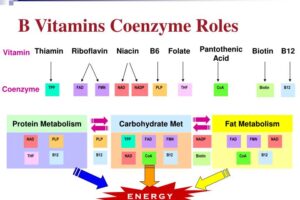
Genetics and Molecular Biology Simplified: DNA Replication, Transcription, and Translation
Explore the fundamentals of genetics and molecular biology — learn about DNA replication, transcription, and translation, the essential processes of life.
Introduction
At the heart of every living organism lies the blueprint of life — DNA.
Molecular biology studies how genetic information is stored, transmitted, and expressed. In this blog, we will dive into three core processes: DNA replication, transcription, and translation, which together drive inheritance and protein synthesis.
What is Genetics and Molecular Biology?
-
Genetics focuses on the inheritance and variation of genes.
-
Molecular Biology explains the molecular mechanisms through which genetic information flows from DNA to RNA to proteins — the “Central Dogma” of biology.
1. DNA Replication
Purpose:
To create an exact copy of the DNA before a cell divides.
Location:
Nucleus (in eukaryotes)
Key Features:
-
Semi-Conservative: Each new DNA molecule has one original (parental) strand and one newly synthesized strand.
-
Bidirectional: Replication proceeds in two directions from the origin of replication.
Key Enzymes:
-
Helicase: Unwinds the double helix.
-
Primase: Synthesizes RNA primers.
-
DNA Polymerase: Adds new DNA nucleotides to the growing strand.
-
Ligase: Joins Okazaki fragments on the lagging strand.
Steps of DNA Replication:
-
Initiation: Origin of replication forms a replication bubble.
-
Elongation: DNA polymerase adds nucleotides in the 5′ to 3′ direction.
-
Termination: Replication ends when forks meet.
Fun Fact:
Human DNA replication involves the duplication of over 6 billion base pairs in just a few hours!
2. Transcription
Purpose:
To copy a gene’s DNA sequence into messenger RNA (mRNA).
Location:
Nucleus (in eukaryotes)
Key Steps:
-
Initiation: RNA polymerase binds to the promoter region of the gene.
-
Elongation: RNA polymerase moves along the DNA, synthesizing RNA.
-
Termination: RNA polymerase releases the completed mRNA strand once a stop signal is reached.
Important Concepts:
-
Template Strand: Only one DNA strand is transcribed into RNA.
-
mRNA Processing (in eukaryotes):
-
Addition of 5′ cap
-
Addition of poly-A tail
-
Removal of introns (splicing)
-
Summary:
DNA ➔ mRNA
3. Translation
Purpose:
To synthesize proteins from the mRNA template.
Location:
Cytoplasm (at the ribosome)
Key Players:
-
mRNA: Carries genetic instructions.
-
tRNA: Brings amino acids to the ribosome.
-
Ribosome: Site of protein synthesis, made of rRNA and proteins.
Steps of Translation:
-
Initiation: Ribosome assembles around the mRNA. First tRNA binds to the start codon (usually AUG).
-
Elongation: tRNAs bring amino acids in sequence, and the ribosome links them via peptide bonds.
-
Termination: When a stop codon is encountered (UAA, UAG, UGA), the newly made protein is released.
Important Concepts:
-
Codon: A triplet of mRNA bases coding for one amino acid.
-
Anticodon: Complementary triplet on tRNA.
Summary:
mRNA ➔ Protein
The Central Dogma of Molecular Biology
DNA→TranscriptionRNA→TranslationProtein\text{DNA} \xrightarrow{\text{Transcription}} \text{RNA} \xrightarrow{\text{Translation}} \text{Protein}
This flow of information is universal across all forms of life, from bacteria to humans.
Conclusion
DNA replication, transcription, and translation form the backbone of life.
Together, they ensure that genetic information is accurately passed down and expressed, allowing organisms to grow, adapt, and evolve.
Understanding these processes is fundamental to fields like genetics, biotechnology, and medicine.



